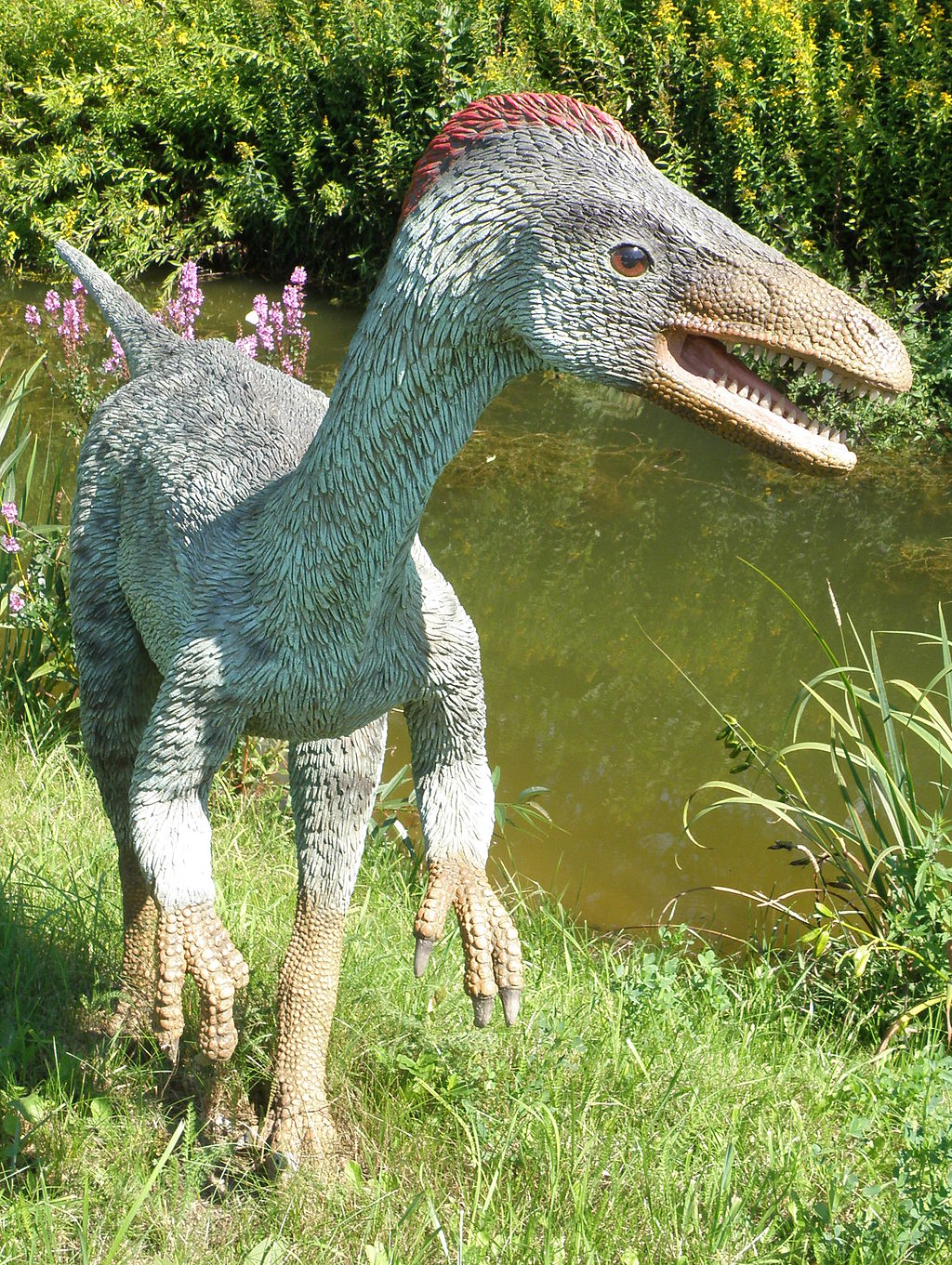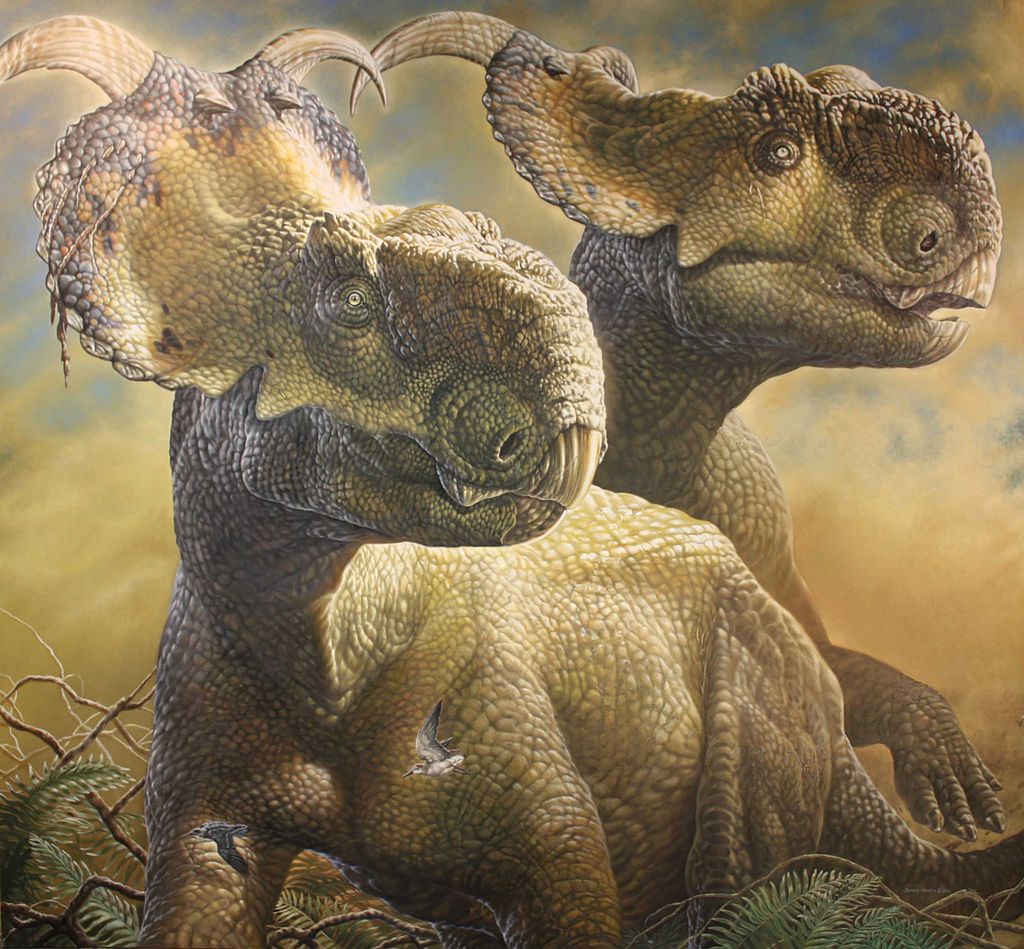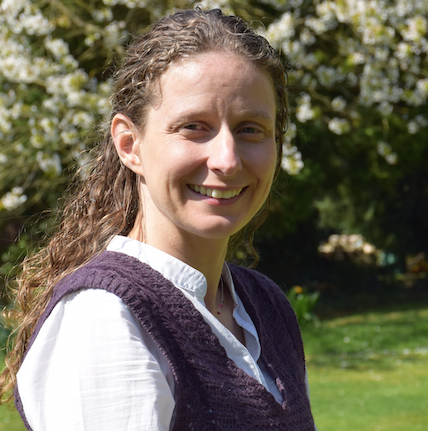
Dinosaur park formation fauna By J.T. Csotonyi [CC BY 2.5], via Wikimedia Commons
The creator of the universe used – by the best of our scientific knowledge – processes that took billions of years to produce the world we know today. So are we the pinnacle of creation, or simply the next stage in the unfolding of God’s purposes? The Bible says that all creation praises God, so every living thing has an intrinsic value. All those single-celled organisms, trilobites, tree ferns and giant animals were fulfilling an important purpose before we came on the scene.
The various dinosaur movies (which shall remain nameless, and probably commit all sorts of scientific faux pas) might give some sense of curiosity and wonder at the complexity and variety of prehistoric life, but a little more science takes that to another level. Dinosaurs were the dominant land animals for 160 million years. At one end of the size scale is the Lesothosaurus, which is the size of a chicken. At the other end is the Giant Titanosaur, which could grow up to at least forty metres long and twenty metres tall, possibly weighing as much as seventy seven tonnes – which is the weight of fourteen African elephants. Palaeontologists can even study dinosaur embryology by looking at fossilised eggs.

Troodon By Alina Zienowicz (Ala z) (Own work) [CC BY-SA 3.0], via Wikimedia Commons
Working with palaeontologists has made me very aware of the distinctions between different creatures. I now know that I cannot get away with simply calling any large extinct animal a dinosaur, especially if it swims or flies. I won’t go into the details of the other exceptions here, but suffice it to say that dinos are a specific branch of the tree of life, and many ‘dinosaur’ toys and books are mislabelled. Graduates of the Cambridge Earth Sciences or Zoology departments have a lovely time sighing and rolling their eyes at these well-meaning mistakes.

Pachyrhinosaurus Perotorum Alaska By James havens (Own work) [CC BY-SA 3.0], via Wikimedia Commons
I hope that some readers are inspired to run a Dinosaur Sunday in their own church, perhaps even inspired by Mary Higby Schweitzer’s work on molecular palaeobiology. If you have talented teachers and the occasional scientist to advise, I’m sure it is more than possible! I would love to hear if any of you have a go, or if you have some other good quality resources to recommend.
Dinosaur Sunday was the brainchild of a church in Greenock, and developed as part of the Scottish Scientists in Congregations (SIC) initiative. Some of the resources produced by the SIC churches are now featured on their website.
Many thanks to Lizzie Coyle, the Faraday Institute’s Youth and Schools Outreach Officer for helpful information and comments.
[1] The Cenozoic was the era after the demise of most of the dinosaurs. The dinosaurs were here during the Mesozoic era, which is subdivided into the Triassic, Jurassic and Cretaceous periods. See the geologic time scale.

© Ruth Bancewicz, Nigel Bovey
Ruth Bancewicz is a Senior Research Associate at The Faraday Institute for Science and Religion, where she works on the positive interaction between science and faith. After studying Genetics at Aberdeen University, she completed a PhD at Edinburgh University, based at the MRC Human Genetics Unit. She spent two years as a part-time postdoctoral researcher at the Wellcome Trust Centre for Cell Biology at Edinburgh University, while also working as the Development Officer for Christians in Science. Ruth then moved to The Faraday Institute to develop the Test of FAITH resources, the first of which were launched in 2009. Ruth is a trustee of Christians in Science and on the advisory council of BioLogos.




